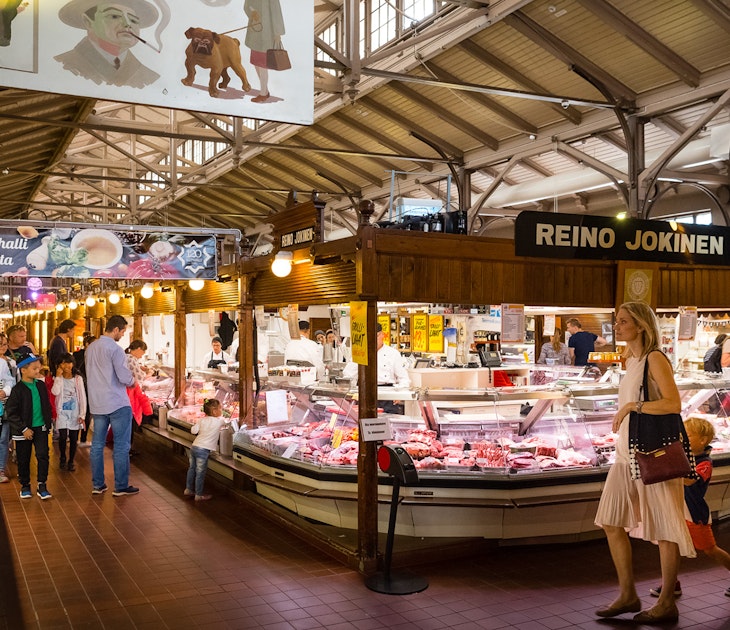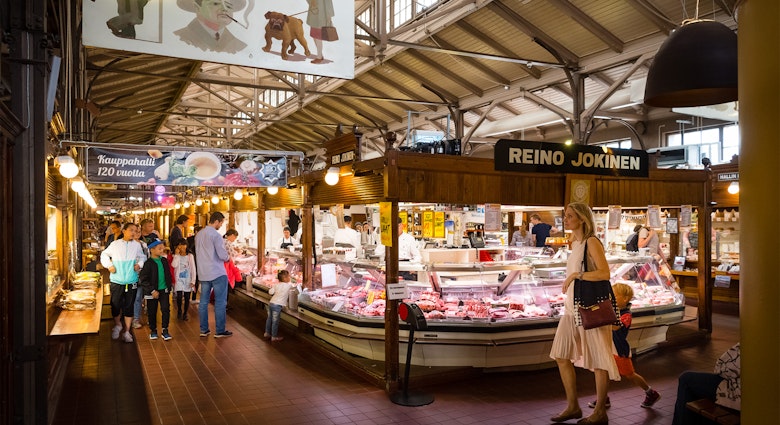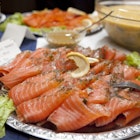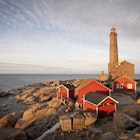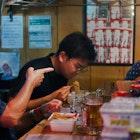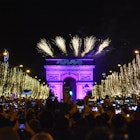From crafts and medieval architecture to haute cuisine and cocktails, enjoy the very best of Stockholm with Lonely Planet Magazine's guide.
Experience Scandinavia’s design capital
From the upmarket stores of Östermalm to the jumbled bric-a-brac shops of Upplandsgatan, this is a city that has style hard-wired into its DNA.
Housed in a disused fire station in Stockholm’s hip Södermalm district, a retro reclamation store is stacked literally floor to ceiling with artfully shabby lamps, antique jewellery, battered paintings and distressed dressing tables. This is Brandstationen - called a ‘toy shop for grown-ups’ by owner Christian Quaglia, it’s one of Stockholm’s many vintage stores (Krukmakargatan 22; herrjudit.se)
Few Stockholm stores have greater heritage than waterfront Malmsten. With its pine floors and stark white walls, it’s closer to an art gallery than a shop. Slate-grey armchairs and blonde-wood cabinets are arranged around the half-empty showroom, picked out by spotlights, and with plaques detailing the genesis of each design. Malmsten’s furniture encapsulates the key values of Swedish design - beauty, elegance, functionality and, above all, simplicity (Strandvägen 5b; malmsten.se).
Learn to fika like a local
One thing guaranteed to get Stockholmers chatting is a strong cup of coffee and a thick slice of cake. The country drinks more per capita than practically every other nation on Earth (only Finland’s consumption is higher). The humble coffee break even has its own word, fika, which describes the act of sharing a coffee and something sweet with friends, in as snug a setting as possible.
If there’s one place that understands fika, it’s Vetekatten. Founded in 1928 on Kungsgatan - Stockholm’s former red light district, now a busy shopping street - this historic café has been in the same family for 40 years. Aproned waitresses hurry past with platters of sticky pastries and steaming coffee pots, while glass windows in the kitchen wall reveal bakers adding the final touches to trays of kanelbulle (cinnamon rolls) and kaffeebrod (coffee bread).
Another of the city’s classic fika venues, Sturekatten, is tucked away on the shady backstreet of Riddargatan. Reached via a corkscrew staircase, it occupies the top floors of a merchant’s house dating from the early 1700s. The traditionally furnished interior is a rabbit’s warren of rooms filled with worn armchairs, faded oil paintings and antique lamps.
Get nostalgic in Skansen
It’s a crisp spring morning on the island of Djurgården, a 20-minute ferry from Stockholm’s city centre, and another day is beginning in the 100-year-old town of Skansen. Bathed in sunshine, its streets are a hive of industry. The town’s potters, weavers, saddle-makers, printers, bakers and silversmiths are opening up for the day’s trade, while glassblowers stoke their furnaces, gardeners tend to the allotments and the faint clang of the town’s iron foundry rings out across the hillside.
This huge open-air museum was established to recreate the atmosphere of a provincial Swedish town from the early 19th century. Skansen’s winding streets are lined with buildings collected from all over Sweden - flax mills and cobblers’ shops, blacksmiths and pharmacies, clapboard churches and merchants’ houses. The town even has its own Nordic zoo, along with licensed taverns where you can drink home-brewed beer from wooden flagons.
Discover the secrets of Gamla Stan
Night is falling over Gamla Stan, Stockholm’s tangled old town, and its cul-de-sacs and courtyards are pin-drop quiet. However, the silence is only skin-deep - somewhere in the old city, deep beneath the streets, the party at Baggen is just getting into swing (Svartmangatan 27; musikvalvet.se).
Hidden away behind a nondescript doorway on the tiny backstreet of Svartmangatan, this secret folk music club is reached via a steep stone staircase that leads down from street level into a cramped, brick-vaulted cellar. This is part of a network of subterranean tunnels rumoured to lie beneath Gamla Stan.
And the area holds many more mysteries. On the busy square of Stortorget, surrounded by cafés, there is a cannonball lodged in a wall since a medieval siege, and bullet-holes left by one of the city’s periodic revolutions. Nearby, there’s a hidden garden that once belonged to members of ABBA, and an underground bathhouse housed in the stone vaults of a church cellar.
Old city, new cuisine
In contrast to traditional Swedish cuisine, Henrik Norström’s food at Michelin-starred Lux is defined by lightness and purity of flavour. Norström is fanatical about local ingredients; a map in the foyer details suppliers, from family-run fruit farms to the fishermen that catch his crab and langoustines (Primusgatan 116; luxstockholm.com).
For the very best Swedish produce, Stockholmers flock to the century-old covered market of Östermalms Saluhall. Sheltered beneath cast-iron beams and a soaring roof, it’s home to rows of stalls stocked with cheese and charcuterie, ice beds laden with cod and herring, wooden trays piled high with cèpes and button mushrooms. The salty tangs and earthy aromas stay with you long after you’ve stepped into the city air (Nybrogatan 31; saluhallen.com).
Drink it up, Stockholm-style
Tough licensing laws and alcohol taxes make Sweden’s capital a pricey place for a drink, so when Stockholmers go out they do it in style. Le Rouge is one of the city’s most opulent cocktail bars. Furnished in Belle Époque Parisian style, it has a hint of the strumpet’s boudoir. Velvet-padded booths are lit by brocaded chandeliers, while bartenders juggle multicoloured cocktails to a soundtrack of jazz and jangling ice cubes (Brunnsgränd 2-4; lerouge.se).
This is an extract from a longer article taken from Lonely Planet Magazine.
Oliver Berry is a Lonely Planet guidebook author and a regular contributor to Lonely Planet Magazine.


